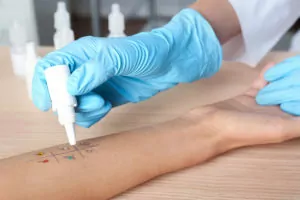 Reader J points to a truly astounding specimen of Crappy Hackington journalism — that is, local coverage of drug issues in a way that hews so closely to the template of hyperbolic, fact-free reportage that it can be scored using our pre-established Crappy Hackington scoring system.
Reader J points to a truly astounding specimen of Crappy Hackington journalism — that is, local coverage of drug issues in a way that hews so closely to the template of hyperbolic, fact-free reportage that it can be scored using our pre-established Crappy Hackington scoring system.
The article comes from Cincinatti’s WKRC Local 12, ran under the headline “Heroin Use Growing in Tri-State,” and reads as follows. I’ve highlighted the best bits and noted my scoring of each Crappy Hackington device.
Emergency crews are dealing with a powerful resurgence of a dangerous old drug, and the bad news is, it’s likely to get worse. It’s not the kind of thing you expect when you go out to dinner or the grocery store, but on a regular basis, emergency crews are dealing with heroin overdoses in public places. Experts say the dramatic upsurge is coming from an increased supply of black tar heroin coming in from Mexico.
Local 12’s Rich Jaffe says making matters worse,there’s a new kind of heroin headed this way, and it’s target market is our children! [3 points for egregious, tabloid hyperbole, plus a bonus point for the use of the exclamation point.]
Often smuggled in tiny balloons, use of black tar heroin in the Tri-State is big business. Across the area, emergency crews say it’s not unusual to find overdosed junkies in public places, with the needles still in their arms.
Chief Stan Deimling, Union Township Fire:“They’re common, they’re becoming very common, [5 points for discussion of drug trends said to affect “more and more” people with no attempt to quantify the claim.] something we saw very little of in years past, and unfortunately now, we see them on a regular basis. They can be doing this in public restrooms, they can be in restaurants, shopping centers. Basically, any place they can go and get a fix, we can find them.”
The heroin is being spread and marketed by the Mexican mafia.
Russ Neville, U.S. Drug Enforcement Administration: “Problem with the black tar heroin is the quality, quality on it. This is not made in a sanitized lab, like Parke Davis, this is made out in the desert in some hut in Mexico and then it’s smuggled up here. And over the years, the quality of the black tar heroin has increased, it’s getting better…” [5 points for quoting law enforcement without quoting anybody from any other point of view.]
“The emergency crews here in union township have actually developed a pretty good track record of virtually bringing people back from deaths door after a heroin overdose. They’re using a drug called Narcan that basically neutralizes the narcotic effect, but in the future even Narcan may be no weapon against a new form of heroin making its way here from the southwest.”
It’s called cheese, and it has spread like a deadly virus [3 points for tabloid-style hyperbole] through the Dallas, Texas School District. It’s a combination of black tar heroin, and over the counter cold medication. Selling for 2 dollars a dose, it’s marketed to children 12 and older.
“They made it available even in the middle schools out there, and it’s a serious problem out there, and whatever’s a problem out there, it will eventually get here.”
Rich Jaffe, Local 12.
Russ Neville from the DEA tells us that, unlike some drugs, heroin users run the gamut across all socio-economic lines. He believes that the growth in heroin is directly tied to law enforcement doing a good job of cracking down on oxycontin trade across the country. As one drug becomes more scarce, the demand for another grows.
J scored this article as a 19 on the Crappy Hackington scale. I rated it at 17, although it might deserve an even higher score simply for its abuse of the apostrophe. However you score it, it’s quite a masterpiece.